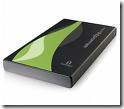 Hard Drives Versus Solid State Drives
Hard Drives Versus Solid State Drives
The most recent solid state drives, which are referred to as flash SSDs, have reached capacities of up to 256 GB, and their performance often exceeds 200 MB/s with extremely short latencies. However, only a few of them are truly worth the several hundred dollar investment they demand, as flash SSDs require intelligent, multi-channel configurations with smart controllers and cache memory. The cache is required to enable command queuing, in an effort to maximize wear leveling and performance with changing performance loads. But we’ll stop talking about flash storage, as it is only interesting in the very high-end and the very low-end. Hard drives will continue to dominate the storage market for several years.
Capacities of up to 2 TB cannot yet be realized on flash memory; and if it were possible, it would cost thousands. The cost advantage in the mainstream is even more significant, as terabyte hard drives are available at only $100, while you have to spend three times as much for only 10-20% of the capacity on flash SSDs. And finally, the flash market could not even supply sufficient flash memory to saturate the storage demands of today (and tomorrow).
Desktop Hard Drive Analysis
We will look at some notebook hard drives in a future article, as these HDD types will dominate the storage market in coming years, due to the shift from stationary to mobile computing. Today we’ll look at three hard drive generations by Samsung: the Spinpoint T166 at 500 GB, the Spinpoint F1 EcoGreen 1000 GB, and the Spinpoint F2 EcoGreen 1500 GB. These represent Samsung’s last three product lines, and they serve as perfect examples to pinpoint where storage is heading.

